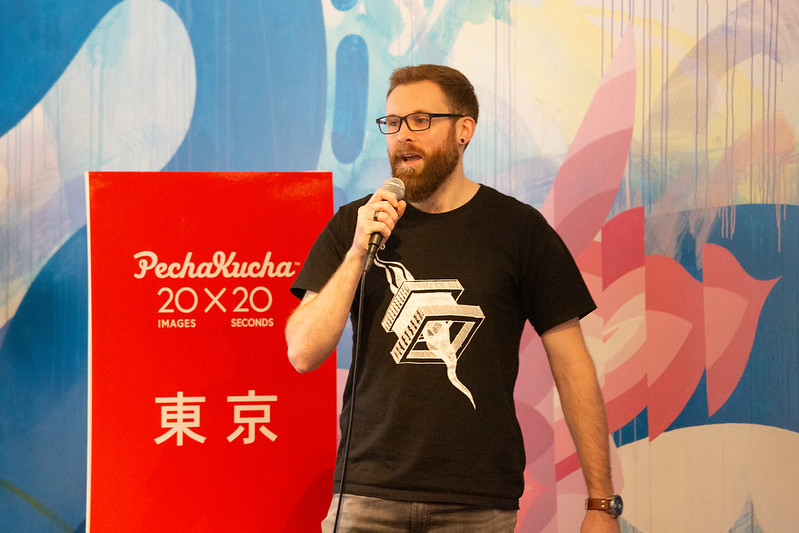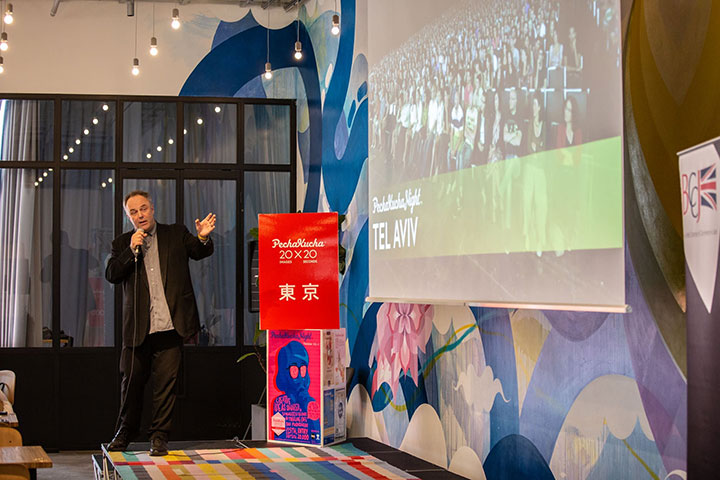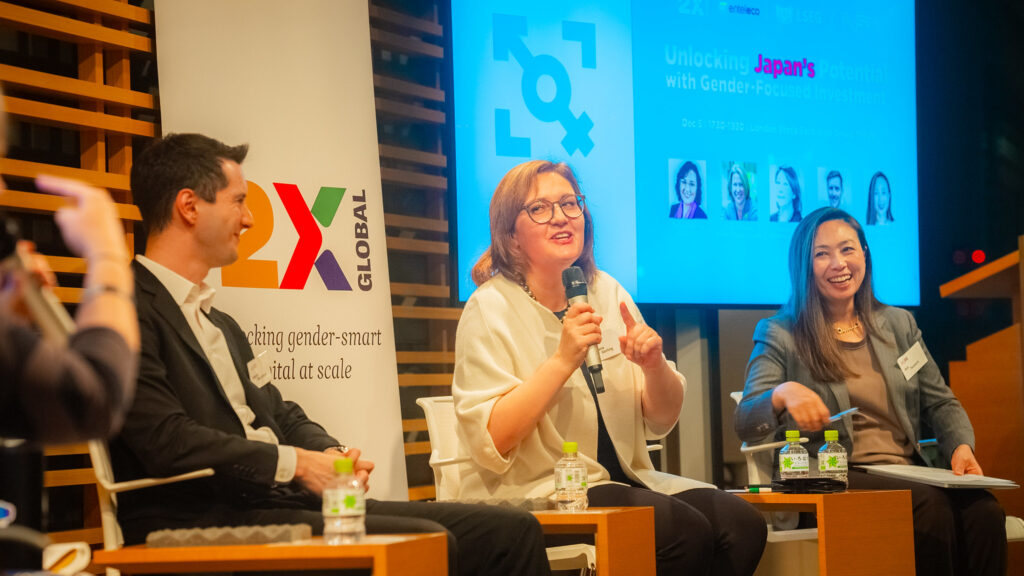Member? Please login
BCCJ x PechaKucha 2020: Techs in the City

Written by Sterling Content
March 5, 2020
Past Event Round Ups
The BCCJ and PechaKucha teamed up on February 20 to mark International PechaKucha Day with the interactive event “Techs in the City.”
Pioneering BCCJ members and friends used PechaKucha’s visual 400-second format (20 slides with 20 seconds spent on each one) to present their efforts in tackling some of the 21st century’s greatest challenges.
Water-refill app
Mariko McTier introduced mymizu, a circular economy initiative she co-founded with Robin Lewis to tackle unnecessary single-use plastic—starting with bottled water—in Japan. It focuses on Japan’s first water refill app, which has attracted more than 20,000 downloads since its launch last year.
The inspiration for mymizu came when the pair witnessed first-hand the volume of plastic bottles on Japan’s shoreline. An estimated 3.9 billion of the 25 billion plastic bottles produced each year across the country are not recycled. Instead they are incinerated, put into landfill or swept into waterways.
“At present, with lots of vending machines in Japan, the most convenient thing to do when you’re thirsty is to buy from them,” said McTier. “I thought, what if you could open an app and look for places to refill nearby instead.”
In addition to public sources like water fountains, the app shows hundreds of eateries, hotels, shops and other businesses that are willing to fill up water bottles, even to non-paying customers. Users can also add water sources they find and even track the amount of CO2 they have saved.
“We’re helping to spread what we think is an easy solution (to environmental issues). We can start small and grow from here,” said McTier, adding that mymizu is more than just an app. “We’re also showing the world what a sustainable movement looks like.”
With Japan hosting the Olympic and Paralympic Games this summer, McTier believes this year is a great opportunity to showcase that there is growing demand for sustainable alternatives such as using refillable bottles.

Boosting creativity using AI, rest
Max Frenzel, principal researcher at tech firm Qosmo Inc., shared his expertise in using AI to boost human creativity. He pointed out that although mankind has expressed fear at AI’s capability to erode people’s humanity, the cutting-edge technology can be a great asset for creative industries.
With his background in quantum physics and interest in art and music, he works alongside data scientists and creatives to use algorithmic tools to spark imagination.
At the renowned Barbican arts and learning centre in London, for example, Qosmo installed an exhibit whereby AI selects snippets of material that users record by themselves, to help anyone make art. The firm also ran a DJ project that played tracks selected alternately by AI and people, to create “an interesting dialogue between machines and humans,” he explained.
AI can be a tool to allow people to focus on the few skills that will be valuable in the future, namely creativity and empathy, he said. By taking care of the time-consuming and laborious “busy work” needed for certain tasks, AI can give people freedom to imagine.
Another thing that can help people realize the creativity required for the smart society of the 21st century is rest. He encouraged attendees to nurture their “rest ethic” in the same way they nurture their work ethic.
“Creativity needs down-time and incubation. Achieve more by doing less,” he said, pointing out that the ancient Greeks’ developments in art, science and philosophy can be attributed partly to their respect and appreciation of leisure.

Tapping lunar resources
Kyle Acierno, vice president of global sales at ispace, introduced the lunar robotic exploration firm. It is developing micro-robotic technology to provide a low-cost and frequent transportation service to and on the moon. It also aims to conduct lunar surface exploration to map, process and deliver resources within the moon’s orbit.
Ispace has built a lunar lander in Narita and is preparing for its first mission in 2021. If successful, it will be the first commercial entity to go to the moon. A subsequent mission is planned every year throughout the 20s, with settlement on the lunar surface eyed for 2040. According to Acierno, this vision is possible because of the millions of tonnes of water on the moon’s poles that can be used as fuel and to support life.
But ispace is not the only firm that sees the potential of the moon. Acierno pointed out that Amazon Chief Executive Jeff Bezos’ space firm, Blue Origin, is also developing rovers, as is Japan’s Toyota.
“The price of going to space has decreased because of technological developments,” he said. “A new space race is heating up and the commercial side is playing a big role.”
Within this decade, ispace will send thousands of its 4kg rovers to the moon to search for resources with support from partners in the commercial sector. Its aim is to ensure the long-term future of mankind.
“We envision a world in which you can live on or outside Earth,” he said, adding that those extra resources can provide “a very environmentally sustainable future for all of us.”

Inspiring creativity
Mark Dytham MBE, co-founder of Klein Dytham architecture (KDa), shared how the PechaKucha format he thought up with KDa co-founder Astrid Klein as a quick, easy event has become a global phenomenon.
The pair met at the Royal College of Art in London 30 years ago before setting up KDa in Tokyo to work across disciplines including architecture, interiors, furniture, installations and events. As producers of award-winning projects in Asia, from Tokyo’s Daikanyama T-site and Ginza Place to Open House, Bangkok, they have long understood the need for creatives to present their work through slides.
One evening in 2003, with a shortage of event ideas, they launched the show-and-tell style format at their event space SuperDeluxe. It became an instant hit because presenters could share their passion in a mere six minutes, in a creative way that kept engagement high.
Now PechaKucha is in more than 1,200 cities globally. About 10 cities get a license per month and there are 26,000 presentations online. From aircraft carriers to gardens, theatres to community halls, PechaKucha is held in all kinds of spaces and enjoyed by people on every continent except Antarctica.
“We provide a platform for people around the world. It’s bottom-up, to inspire others,” said Dytham.
PechaKucha has also shown presenters how to deliver their message in an effective way. Building on this success, KDa is launching PK Create, a presentation software that can be used in schools and offices as a learning tool.
It’s another example of innovation, in this case to spark imagination and creativity in education.
What is PechaKucha?
PechaKucha (Japanese for “chit chat”) is the world’s fastest-growing storytelling platform, used by millions around the globe. PechaKucha is what “Show and Tell” always dreamed of becoming. 20 slides. 20 seconds of commentary per slide. That’s it. Simple. Engaging. Spurring authentic connections. PechaKucha is the ideal tool to share passions and drop some knowledge. Global innovators use the PechaKucha platform to create powerful, visually-compelling stories that move audiences in less than 7 minutes.
What is PechaKucha?
PechaKucha (Japanese for “chit chat”) is the world’s fastest-growing storytelling platform, used by millions around the globe. PechaKucha is what “Show and Tell” always dreamed of becoming. 20 slides. 20 seconds of commentary per slide. That’s it. Simple. Engaging. Spurring authentic connections. PechaKucha is the ideal tool to share passions and drop some knowledge. Global innovators use the PechaKucha platform to create powerful, visually-compelling stories that move audiences in less than 7 minutes.









